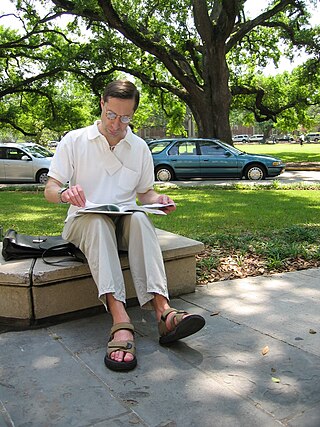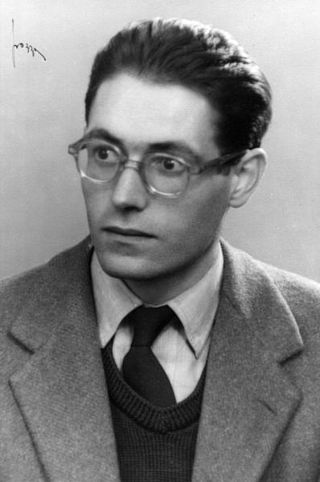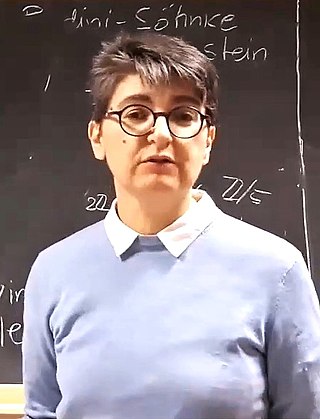Related Research Articles

The Scuola Normale Superiore in Pisa is a public university institution in Pisa and Florence, Tuscany, Italy, currently attended by about 600 undergraduate and postgraduate (PhD) students.

Ennio De Giorgi was an Italian mathematician who worked on partial differential equations and the foundations of mathematics.
A Doctor of Juridical Science, or a Doctor of the Science of Law, is a research doctorate degree in law that is similar to the Doctor of Philosophy degree.
Education in Italy is compulsory from 6 to 16 years of age, and is divided into five stages: kindergarten, primary school, lower secondary school, upper secondary school and university (università). Education is free in Italy and free education is available to children of all nationalities who are residents in Italy. Italy has both a private and public education system.
In Italy, the laurea is the main post-secondary academic degree. The name originally referred literally to the laurel wreath, since ancient times a sign of honor and now worn by Italian students right after their official graduation ceremony and sometimes during the graduation party. A graduate is known as a laureato, literally "crowned with laurel" and is awarded the title of dottore, or Doctor.
The Sant'Anna School of Advanced Studies is a special-statute, highly selective public research university located in Pisa, Italy.

Higher education in Italy is mainly provided by a large and international network of public and state affiliated universities. State-run universities of Italy are under the supervision of Italian's Ministry of Education. There is also a number of private universities and state-run post-secondary educational centers providing a vocational instruction.
These are some of the honorifics used in Italy.
Massimo Porrati is a professor of physics and a member of the Center for Cosmology and Particle Physics at New York University. He graduated from the Scuola Normale Superiore di Pisa, Italy with a "Diploma di Scienze" degree in 1985. Later he worked as a postdoctoral fellow at UCLA and UC Berkeley in the USA. He was a research scientist at the INFN section in Pisa, Italy, in collaboration with CERN, where he over the years has spent several periods, before joining NYU in 1992. His major research interests are string theory, supersymmetry and supergravity, nonperturbative aspects of strings and quantum field theory, and cosmology.
The Scuola Superiore IUSS or the "Istituto Universitario di Studi Superiori" of Pavia is a higher learning institute located in Pavia, Italy.
The Consorzio ICoN is an interuniversity consortium for Italian Studies established in 1999. It consists of 21 Italian universities and focuses on philology and cultural studies. The consortium is based and administrated at the University of Pisa and is supported by the Italian Ministry of University and Research. It aims at diffusing Italian language, culture and literature.
The Academy of Fine Arts of Verona is a post-secondary school for studies in the visual arts.

Eugenio Moggi is a professor of computer science at the University of Genoa, Italy.

A Superior Graduate School is a completely independent institution from a legal point of view, which offers advanced training and research through university-type courses or is dedicated to teaching at graduate or post-doctoral level.

Aldo Andreotti was an Italian mathematician who worked on algebraic geometry, on the theory of functions of several complex variables and on partial differential operators. Notably he proved the Andreotti–Frankel theorem, the Andreotti–Grauert theorem, the Andreotti–Vesentini theorem and introduced, jointly with François Norguet, the Andreotti–Norguet integral representation for functions of several complex variables.

Riccardo Barbieri is an Italian theoretical physicist and a professor at the Scuola Normale Superiore di Pisa. He has written more than two hundred research papers in the field of theoretical elementary particle physics, and has been particularly influential in physics beyond the Standard Model.

Alessandro Faedo was an Italian mathematician and politician, born in Chiampo. He is known for his work in numerical analysis, leading to the Faedo–Galerkin method: he was one of the pupils of Leonida Tonelli and, after his death, he succeeded him on the chair of mathematical analysis at the University of Pisa, becoming dean of the faculty of sciences and then rector and exerting a strong positive influence on the development of the university.

Barbara Fantechi is an Italian mathematician and Professor at the International School for Advanced Studies. Her research area is algebraic geometry. She is a member of the Accademia dei Lincei.
References
- ↑ it:Dottore#Abbreviazione
- ↑ Student Guidebook - Scuola Normale Superiore di Pisa Archived April 26, 2012, at the Wayback Machine
- 1 2 "STATUTO DELLA SCUOLA NORMALE SUPERIORE DI PISA (legge 18 giugno 1986, n. 308)" (PDF). Archived from the original (PDF) on 17 February 2012. Retrieved 17 March 2023.
- ↑ "Law of February 21, 1980, No. 28". Archived from the original on 4 November 2011. Retrieved 17 March 2023.
- ↑ "Decreto Presidente Repubblica 11 luglio 1980, n. 382". www.edscuola.it. Retrieved 17 March 2023.
- 1 2 "FARMACIA DI TURNO - Orari farmacie di turno aperte oggi". farmaciaditurno.org. Retrieved 17 March 2023.
- ↑ "Italy's big six form network for elite". Times Higher Education (THE). 18 February 2000. Retrieved 17 March 2023.
- ↑ "Scuole di Eccellenza" . Retrieved 17 March 2023.
- ↑ "Article 3 of the Law of 14 February 1987, No.41 | L. 14 febbraio 1987, n. 41 Istituzione della Scuola superiore di studi universitari e di perfezionamento S. Anna di Pisa" (PDF). Retrieved 17 March 2023.
- 1 2 "SITO IN MANUTENZIONE". www.istruzione.it. Retrieved 17 March 2023.
- ↑ Università in Italia, Ministry of Education, Universities and Research (MIUR)
- ↑ diplomi di perfezionamento equipollenti ai dottorati di ricerca